
This EV Charger From Anderson EV Can Make Itself Invisible
- Apr 4, 2022
- Views : 3803

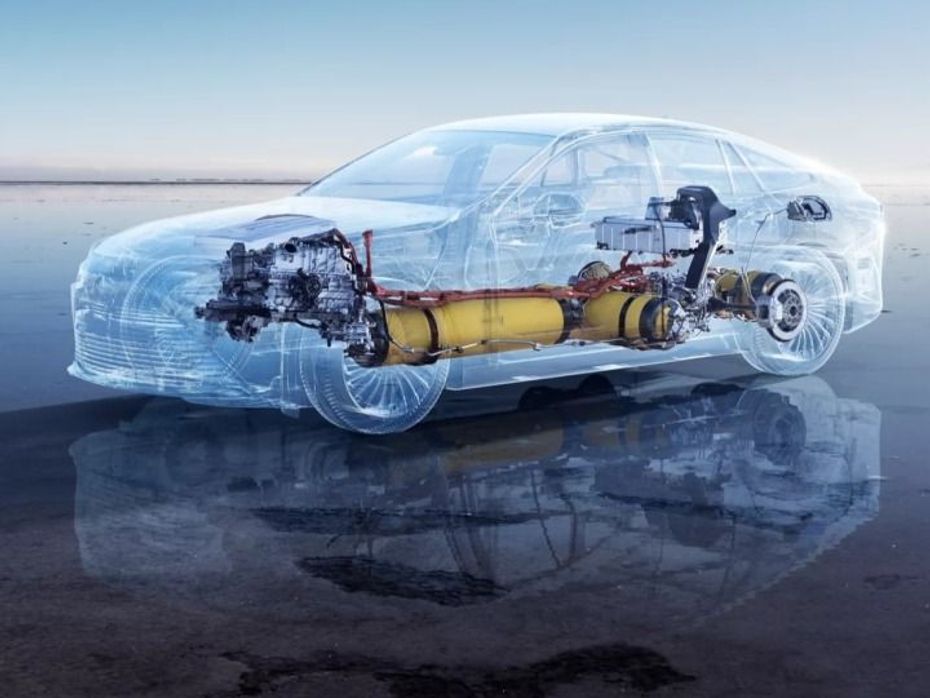
In the race to phase out fossil-fueled cars, carmakers and governments alike are constantly evaluating alternative sources of energy. Battery electric vehicles (BEVs) – or EVs that have no power source other than a battery – are the cars of the future. But hydrogen fuel cells offer a similarly green solution with zero harmful emissions. In fact, some Indian states have included hydrogen development in their EV policies and Transport Minister Nitin Gadkari has flagged off a pilot project studying FCEVs.
What Is A Fuel Cell Vehicle?
A fuel cell electric vehicle (FCEV) is an EV that draws power from a hydrogen fuel cell. The hydrogen, stored in a sealed tank, is the ‘fuel’ that the fuel cell uses to generate energy from the reaction between the hydrogen and atmospheric oxygen in air. The energy released is stored in a battery that’s much smaller in capacity than an EV battery, and the only by-product is clean water.
What are the advantages of FCEVs over EVs?
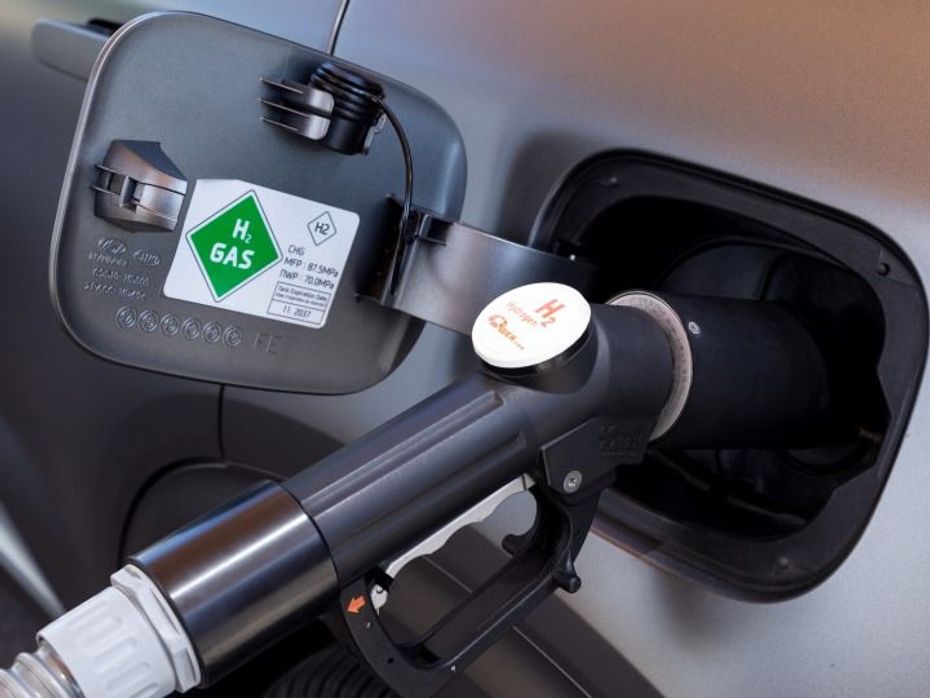
FCEVs solve one major problem of EVs: you can refuel them within minutes. EVs take much longer to juice up, even if you charge at the maximum possible charging rate at a public fast charger.
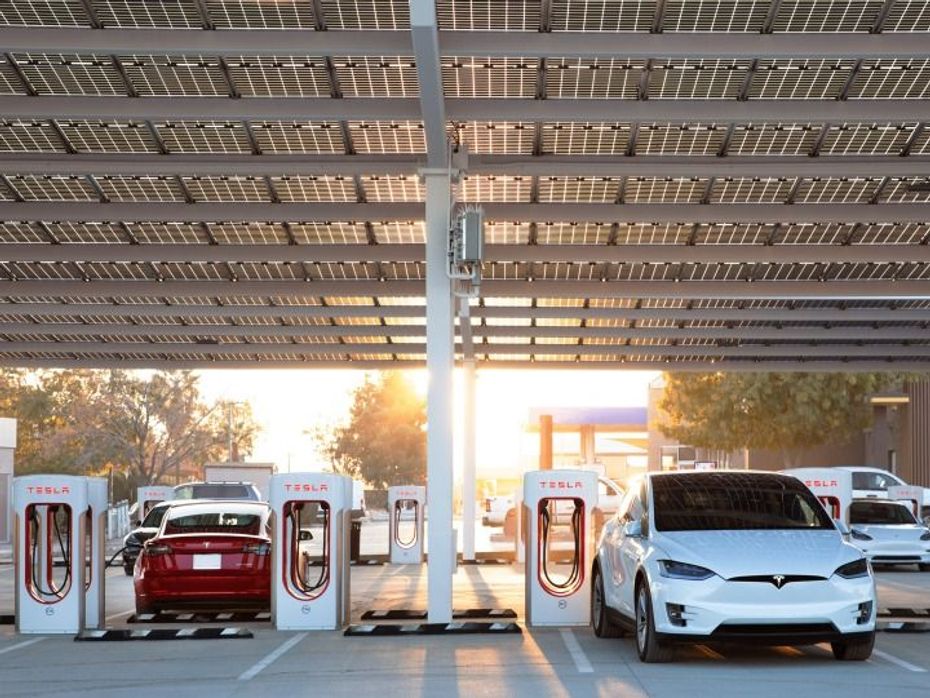
For instance, it can take anywhere from 30 minutes to an hour to charge an EV at a public charging station, but a hydrogen fill-up takes nearly the same time as a petrol or CNG stop – about three minutes.
|
Toyota Mirai |
Tesla Model S |
|
|
Charging time |
Around 3 minutes (estimated, 70MPa pressure supplied) |
Around 30 minutes (250kW DC Supercharger) |
|
Range |
646km (EPA estimated) |
651km (EPA estimated) |
|
Curb weight |
1,917kg |
2,069kg |
Other than the refueling time, FCEVs can be made lighter than electric cars while offering similar range outputs. A Mirai only needs a 1.24kWh battery pack and 5.6kg of hydrogen to achieve the same range as a Model S. The Tesla has a much larger 100kWh battery pack that weighs roughly over ten times that of the Mirai’s.
Do hydrogen-powered cars pollute less than electric cars?
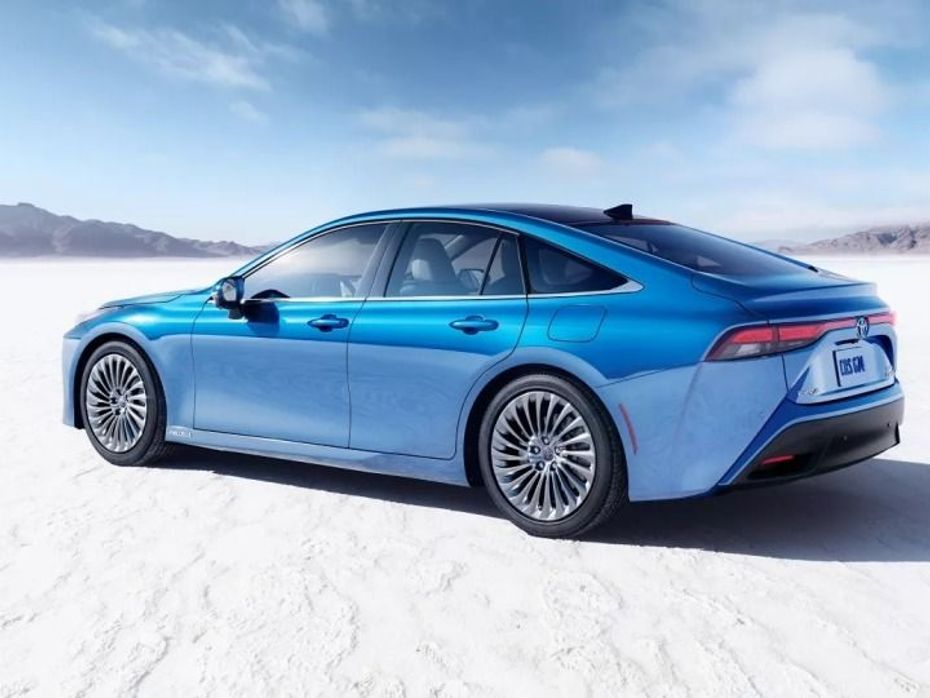
On its own, an FCEV doesn’t produce any emissions other than water that can be expelled as vapour or stored separately. But in order to truly understand the carbon footprint of a car, you also need to look at how the alternative fuels such as hydrogen are generated/sourced.
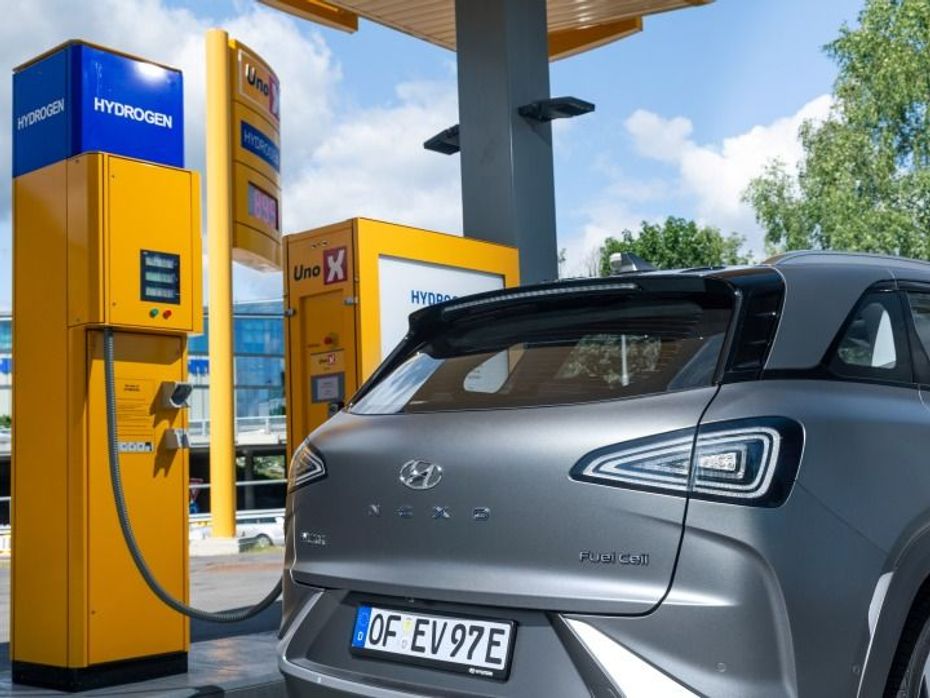
There are three kinds of hydrogen gas that you can use to fuel an FCEV: grey, blue and green.
Grey hydrogen is made from natural gas and produces carbon dioxide emissions. It forms the overwhelming majority (around 95 percent) of H2 gas produced globally. Blue hydrogen, too, is made using non-renewable resources in processes that release relatively less carbon dioxide into the environment. The cleanest is green hydrogen, or hydrogen that’s made from renewable sources with little to no carbon dioxide released into the atmosphere.
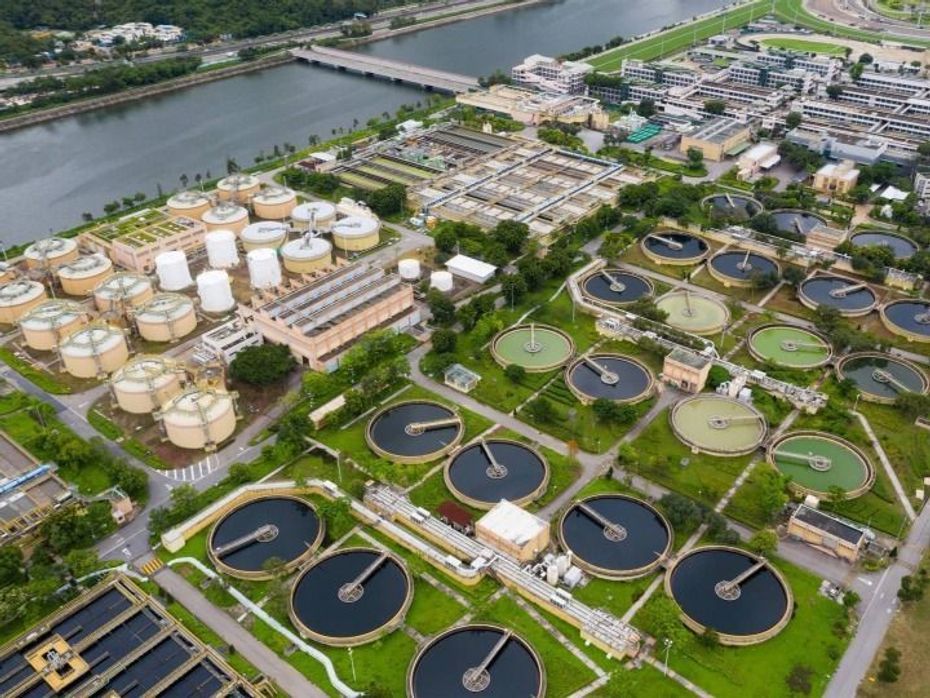
In India, transport minister Nitin Gadkari has cited sewage as one of the potential sources of hydrogen. Hydrogen from sewage could potentially provide an incentive to expand the sewage network and encourage sewage treatment across the country.
Hydrogen is usually produced in small amounts from sewage treatment, so it’s unlikely to overtake grey hydrogen in India anytime soon. Similarly, the majority of electricity production in the country comes from coal or natural gas turbines.
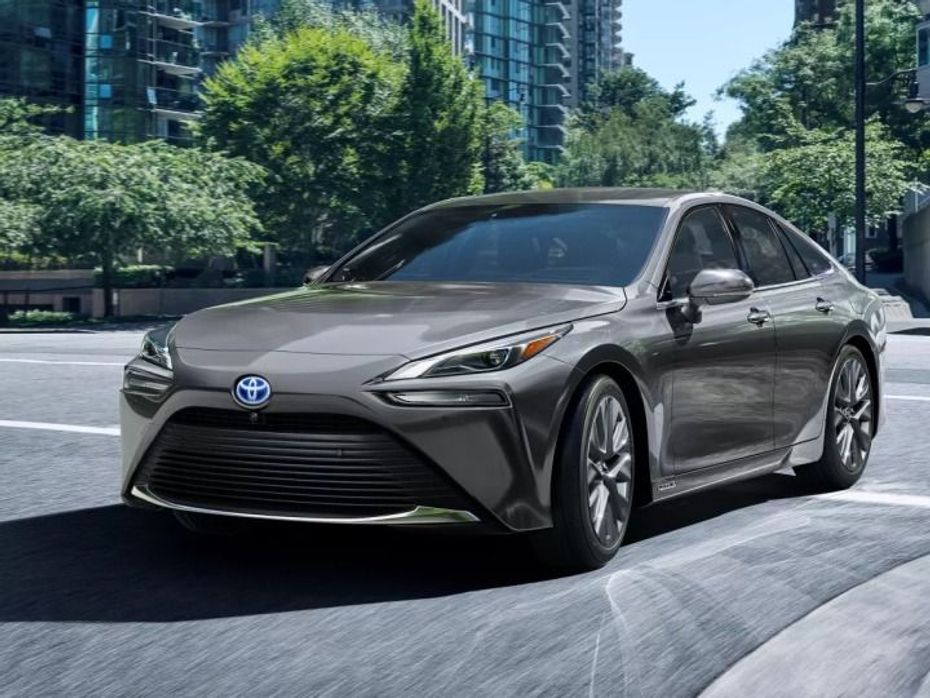
According to reports, the lifetime carbon footprint of BEVs is comparable to FCEVs, about 120g per km. Nevertheless, even in the Indian context, studies have indicated that both FCEVs and BEVs produce lower lifetime emissions than ICE (petrol and diesel) vehicles.
Why aren’t hydrogen fuel cell cars popular yet?

In countries where FCEVs are offered, they only occupy a small percentage of the total vehicle sales. Data from SNE Research shows that less than 20,000 FCEVs were sold globally in 2021. In comparison, worldwide BEV sales amounted to nearly half a crore vehicles.
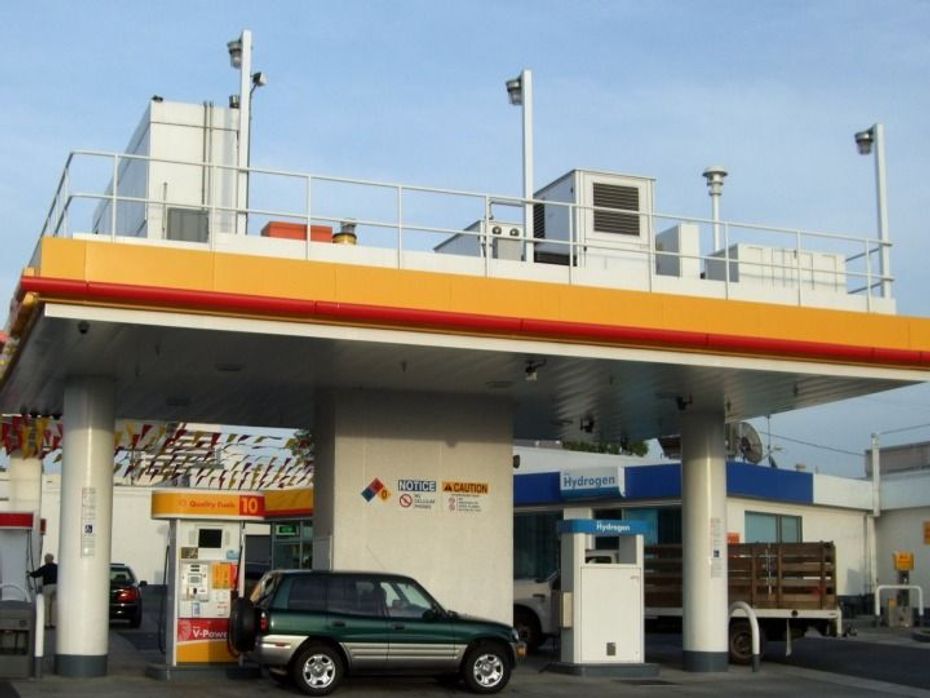
There are multiple reasons for this disparity, primarily fuel availability, purchase cost and refueling cost. Public EV charging stations have cropped up across the globe in the past few years, but hydrogen filling stations are rare to find even in countries with high EV adoption rates. For example, the UK had nearly 26,000 public EV charging stations by 2021 (4,551 rapid chargers) but hydrogen filling stations currently stand at 14.
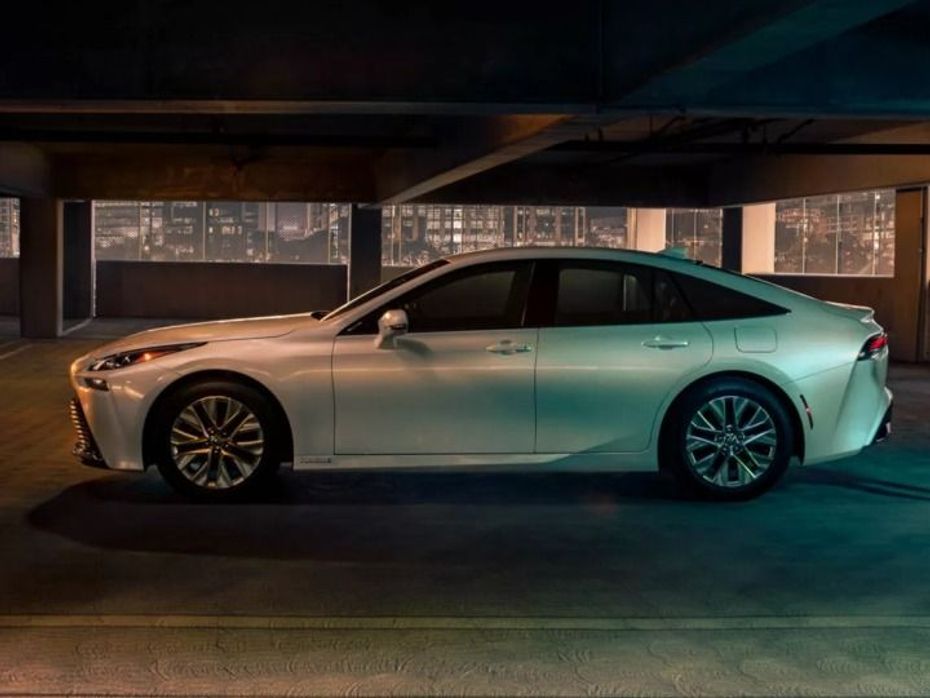
Only two models are in current production – the Toyota Mirai and the Hyundai Nexo. In the US, the Mirai retails between the equivalent of Rs 38 lakh to Rs 50 lakh, while the Nexo SUV starts at around Rs 45 lakh. In comparison, the choice for EVs ranges in the triple digits and offer plenty of value at a lower price. The Tesla Model 3 gets you the acceleration of a properly fast sedan for the equivalent of Rs 31 lakh.
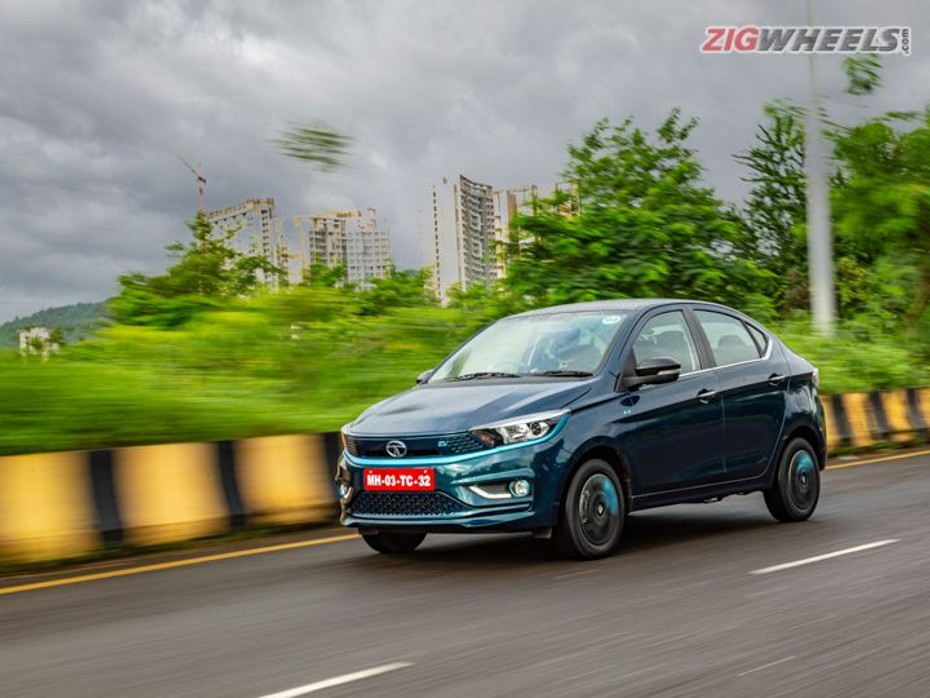
The price gap is likely to be much wider in India, where an entry-level Tigor EV can be had for Rs 12 lakh (ex-showroom). Since the Mirai is exclusively produced in Japan, its price as a completely built unit (CBU) is likely to exceed Rs 60 lakh – over five times as much as the Tata electric sedan. Even a relatively premium EV such as the Hyundai Kona is priced at Rs 23.98 lakh (ex-showroom).
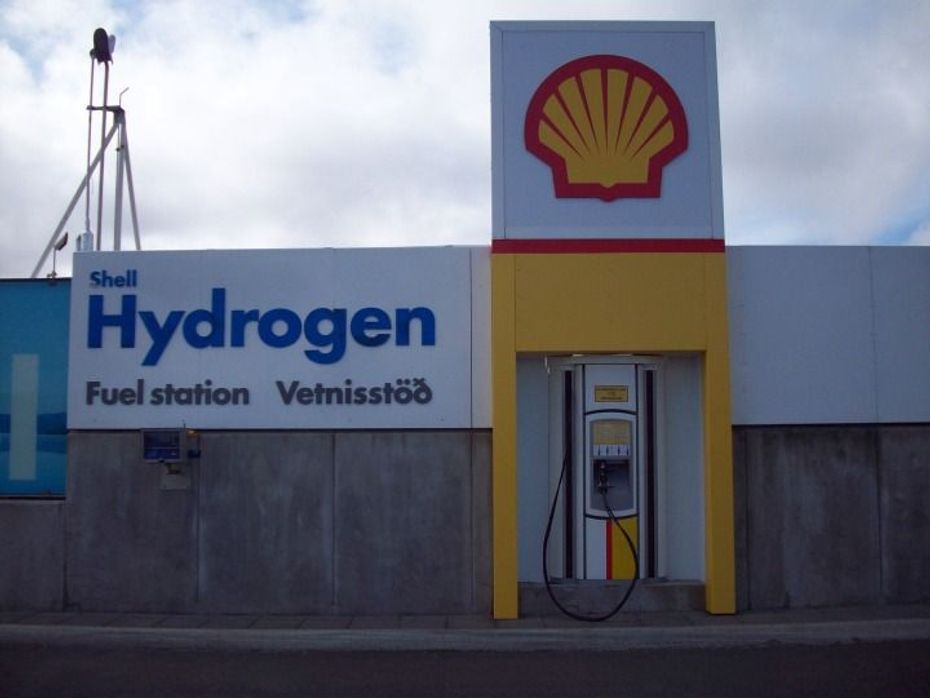
As for refueling, hydrogen can cost from Rs 1,000 to Rs 1,500 per kg in countries such as the UK and US. Hence, it costs anywhere from Rs 5,600 to Rs 8,400 to fill up the Mirai’s 5.6kg tank. That’s still notably pricier than filling up on petrol or diesel for similar range per tank in a comparable model. Of course, H2 prices would come down as its supply improves to cater to rising demand. For instance, a hydrogen fuel company in Norway aims to bring down the cost of production of green hydrogen to just around Rs 100 per kg by 2025.
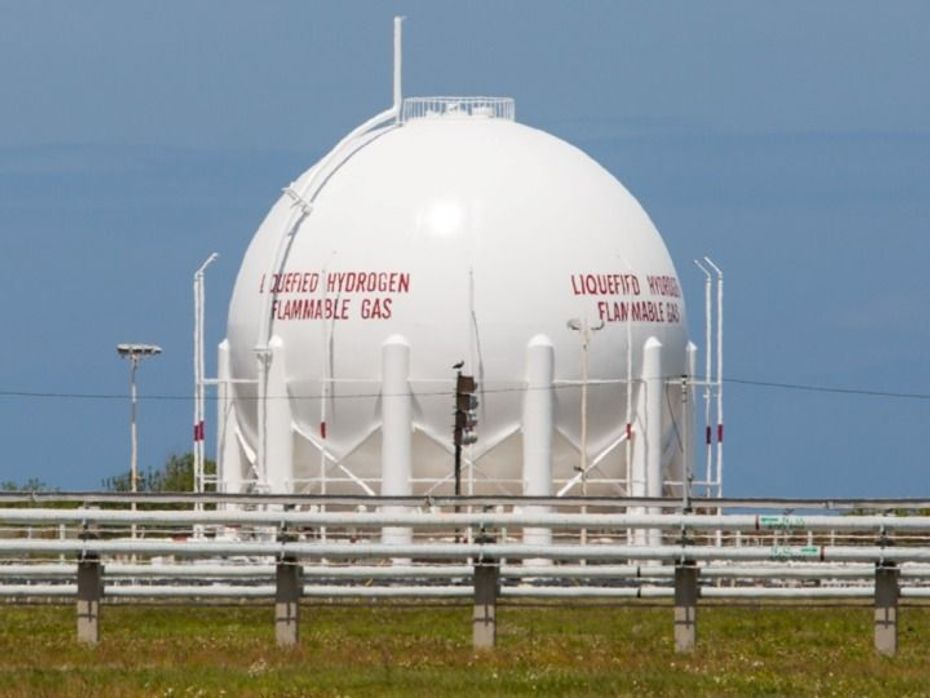
The storage of hydrogen is expensive, and its transportation adds carbon dioxide to the environment. For any country, setting up, running and expanding the hydrogen fuel network can be costly. On the other hand, a vast and far-reaching electricity grid already exists for charging BEVs.
The lack of market choice, high cost and sparse infrastructure are the primary causes of low FCEV adoption rates around the world. Despite these challenges, hydrogen car sales increased by nearly twofold from 2020 to 2021.
Who else apart from Toyota offers FCEVs?
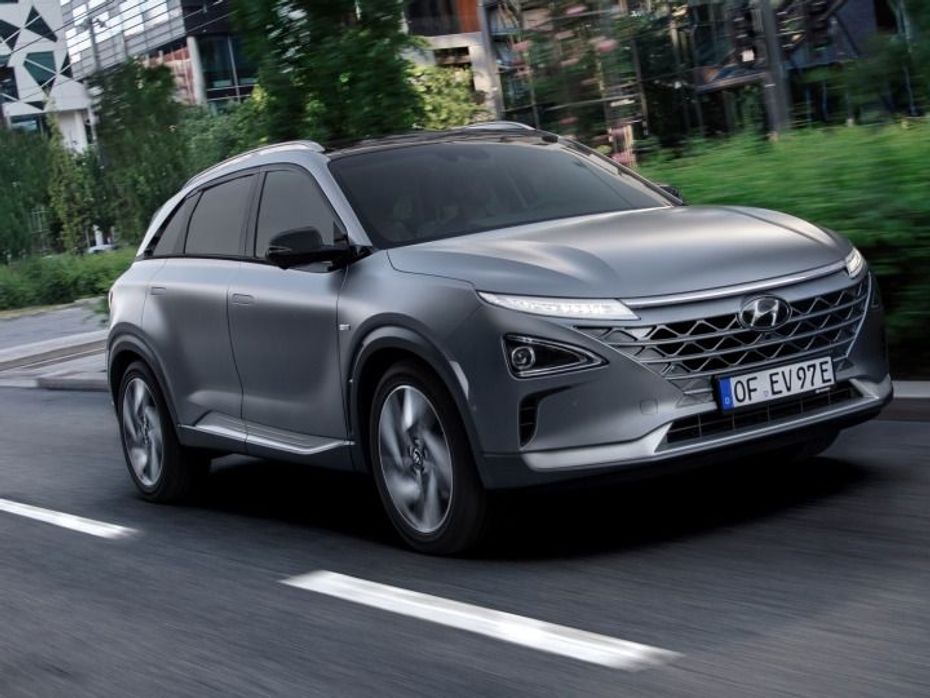
Apart from Toyota, only one other mainstream carmaker offers a hydrogen fuel cell vehicle – Hyundai. The Hyundai Nexo SUV is the leading FCEV in the global market. It makes 161PS and 394Nm, and offers a range of up to 611km on a single tank of hydrogen. These are the two brands that have not committed 100 percent to the BEV route for green mobility since they have their own share of disadvantages.
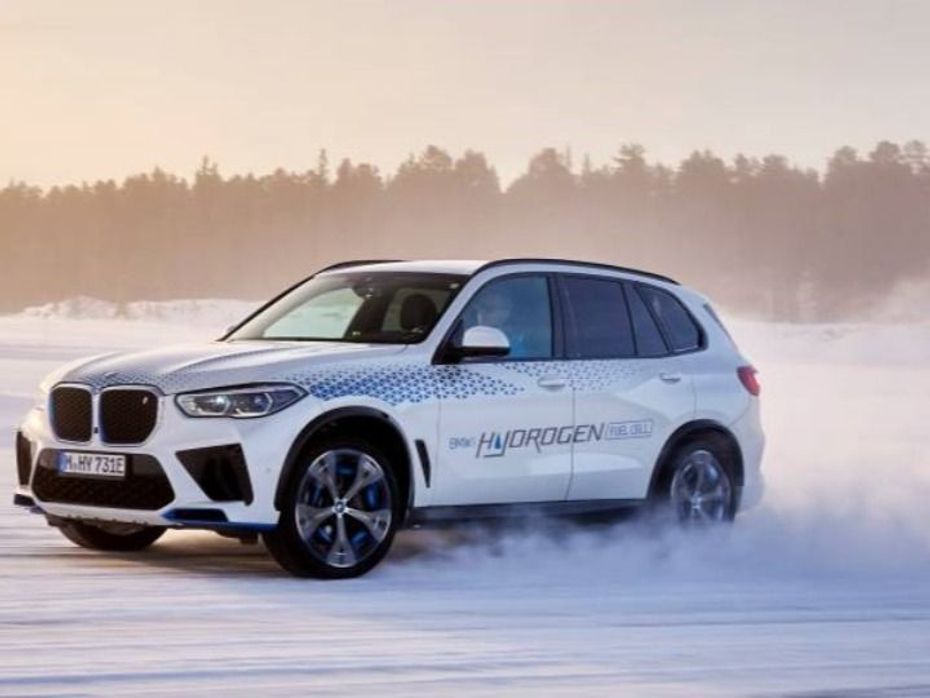
In addition, BMW has developed a hydrogen powertrain that’s being tested in the iX5 Hydrogen SUV. The iX5, essentially an X5 SUV modified with a fuel cell electric drivetrain, is currently undergoing winter testing in Sweden.
Does Tesla offer a hydrogen vehicle?
The American EV maker doesn’t offer any hydrogen vehicles yet. Its CEO doesn’t favour the gaseous fuel, either, as is evident from the tweet below:
Fuel cells should be called fool sells! Such a silly choice for cars. Not great even for a rocket upper stage imo, but at least not absurd.
— Elon Musk (@elonmusk) March 11, 2021
Are hydrogen FCEVs safer than regular EVs?
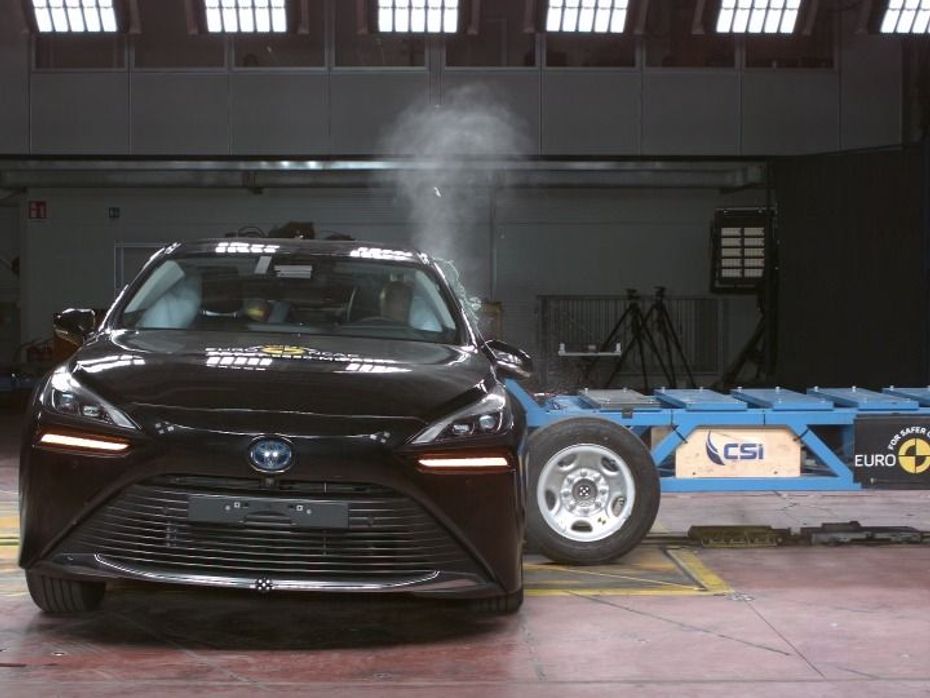
Hydrogen is a flammable gas that’s stored in an FCEV’s fuel tank at high pressure. Even so, the reaction within the fuel cell itself doesn’t burn any hydrogen, but instead uses a steady flow of low-pressure gas to create electricity. According to Hyundai, the safety of a hydrogen car is comparable to modern CNG vehicles. Even a fire risk in an accident is remote, since any leak will cause the gas to immediately vaporise and escape into the atmosphere.
Also read:
Bottom Line:
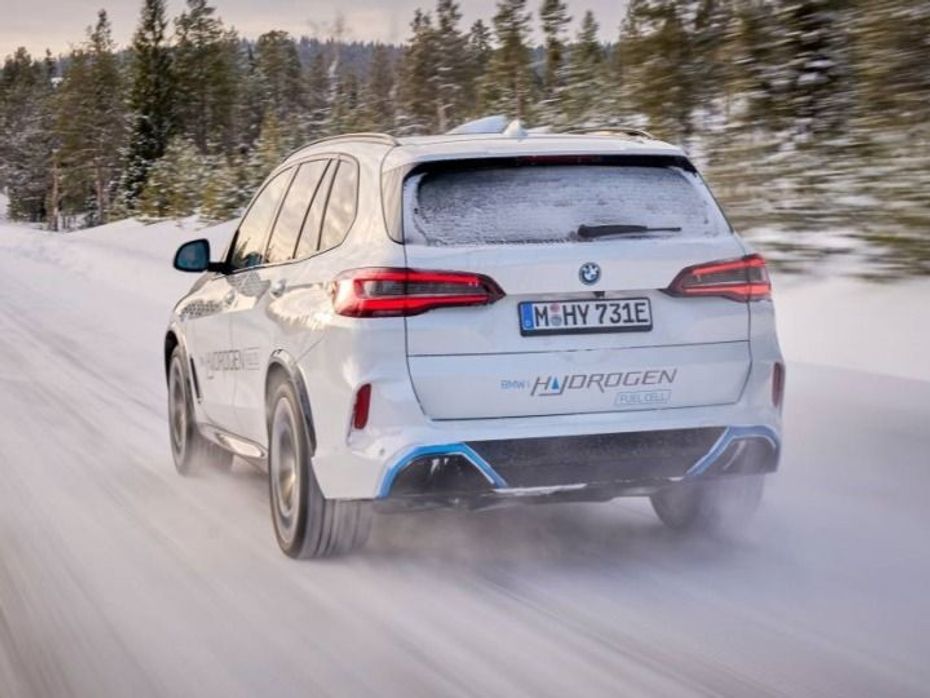
In conclusion, it’s safe to say that FCEVs are unlikely to be the mainstream alternative to combustion engines like EVs anytime soon. They will certainly add some diversity to the green car market, and their arrival is likely to help the H2 infrastructure grow in the country. It also remains to be seen how the government will choose to incentivise or promote these vehicles once they are green-lit. For now, we’ll have to wait until the conclusion of the pilot study to know if or when hydrogen cars will be headed to India.

This EV Charger From Anderson EV Can Make Itself Invisible

Are Maruti Suzuki’s Strong Hybrid Powertrains The Best Engine...

Mahindra XUV 3XO (XUV300 Facelift) Launched With Significant Design...

3 New Major Design Details Mahindra XUV 3XO Will Pack Over...

Tata Curvv: A Much Clearer Look At Its Interior Ahead Of Its Unveiling

2024 Mahindra XUV 3XO Interior Revealed: Old vs New Compared

10 New Features Expected In The Upcoming 2024 Mahindra XUV 3XO...

Mahindra XUV 3XO: All Details You Need To Know In 10 Images

Overview In 10 Images: Mahindra XUV 3XO Mid-Spec MX3 Variant
India's largest automotive community